Geometry proofs
1/27
Earn XP
Description and Tags
I hate proofs.
Name | Mastery | Learn | Test | Matching | Spaced |
|---|
No study sessions yet.
28 Terms
Converse
Exchange hypothesis and conclusion
p—>q
Inverse
Negate both hypothesis and conclusion
~p—>~q
Contrapositive
Switch hypothesis and conclusion then negate both of them
~q—>~p
Law of detachment
If a hypothesis of a true conditional statement is true then the conclusion is also true
Law of syllogism
If apples, then blueberries
If blueberries then bananas
which means if those statements are both true then
If apples then bananas (is also true)
Two point postulate
Through any two points, there exists exactly one line
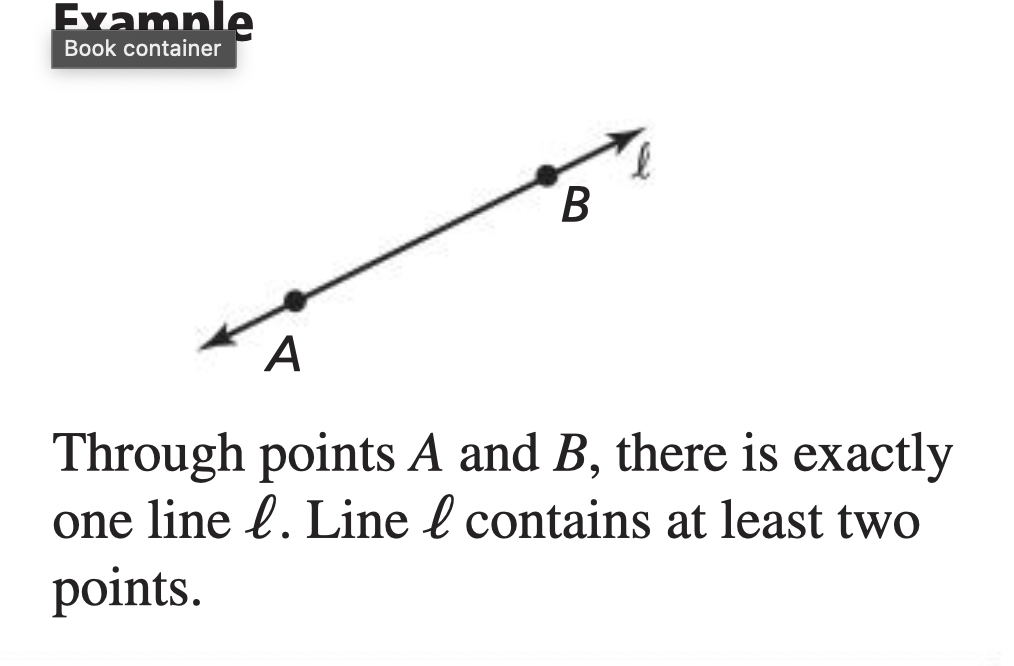
Line point postulate
A line contains at least two points.
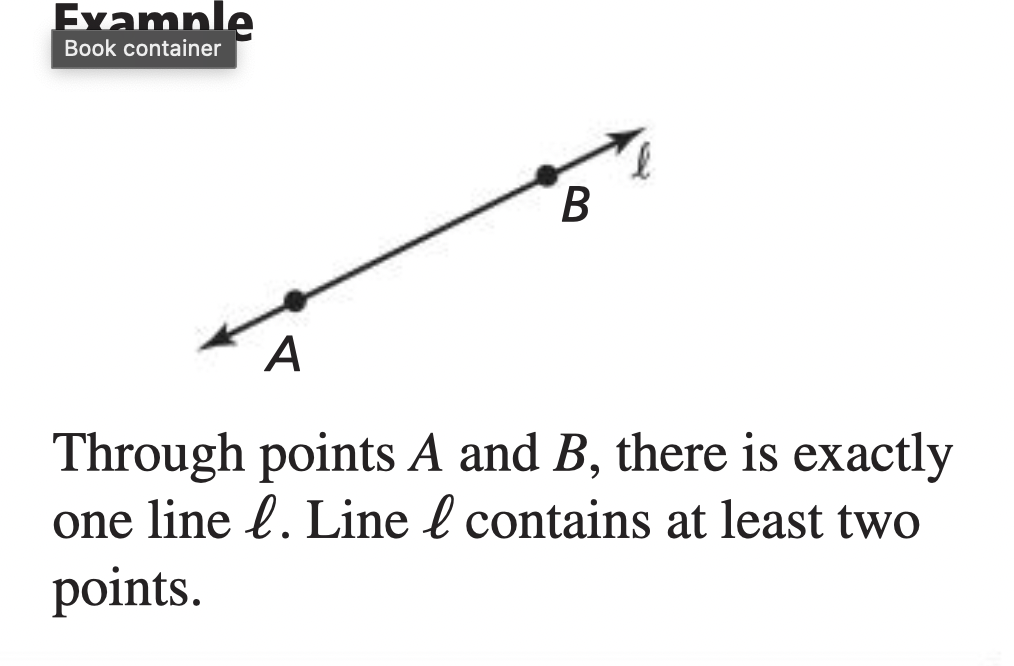
Line intersection postulate
If two lines intersect, then their intersection is exactly one point.
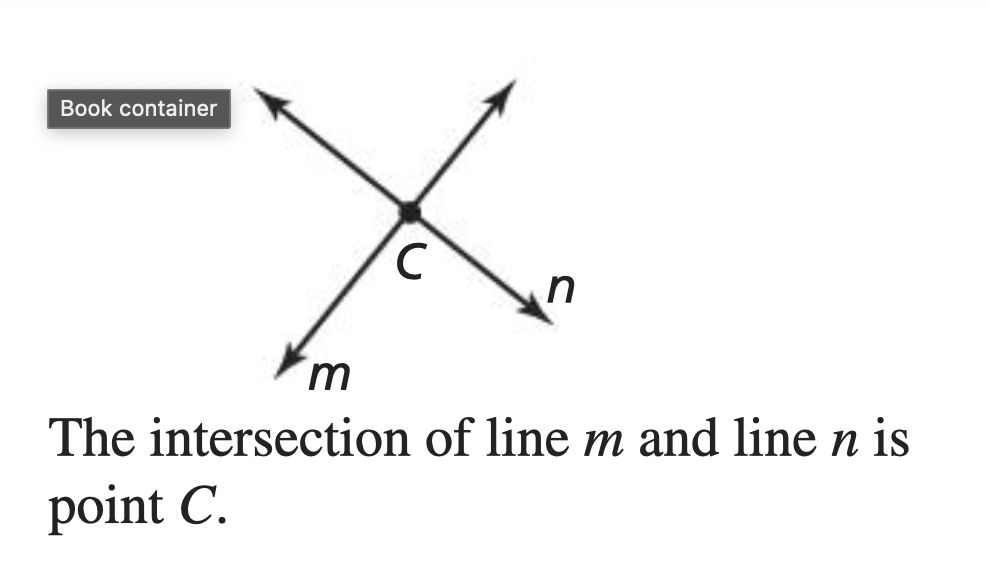
three point postulate
Through any three noncollinearpoints, there exists exactly one plane.
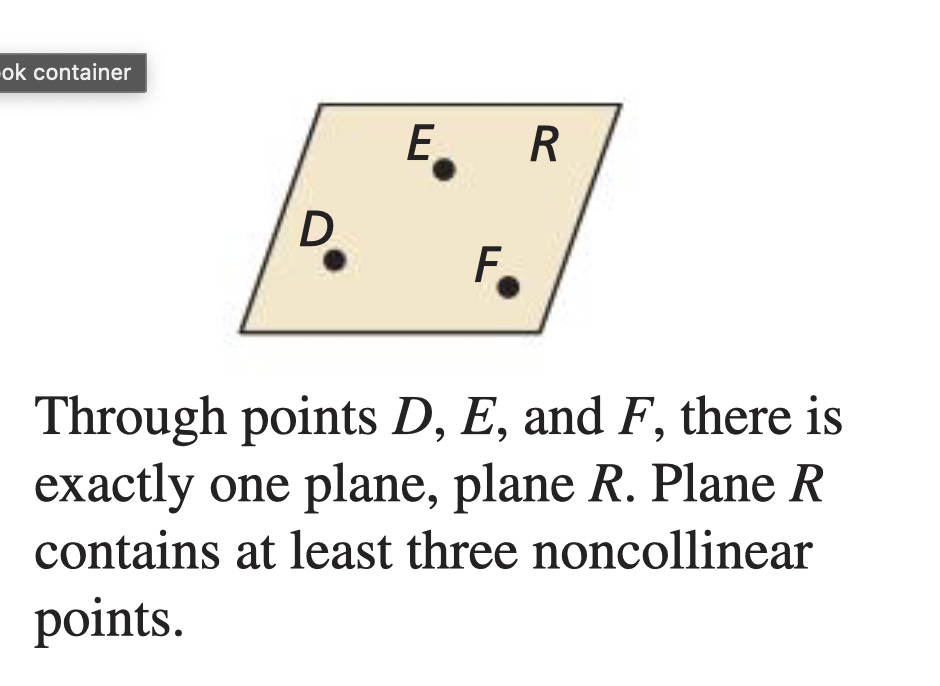
Plane point postulate
A plane contains at least three noncollinearpoints
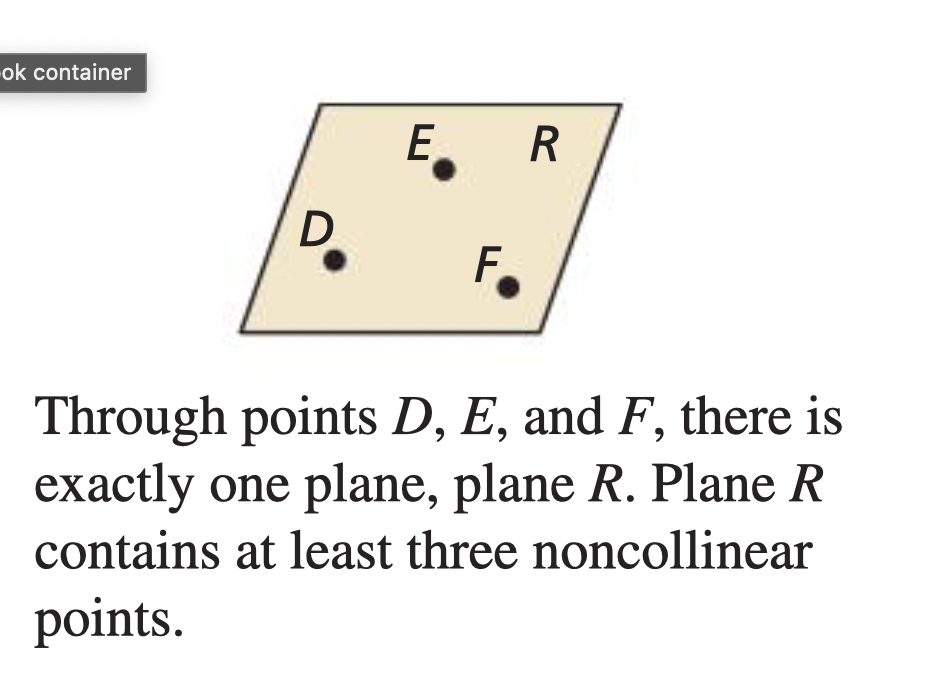
Plane line postulate
If two points lie in a plane, then the line containing them lies in the plane
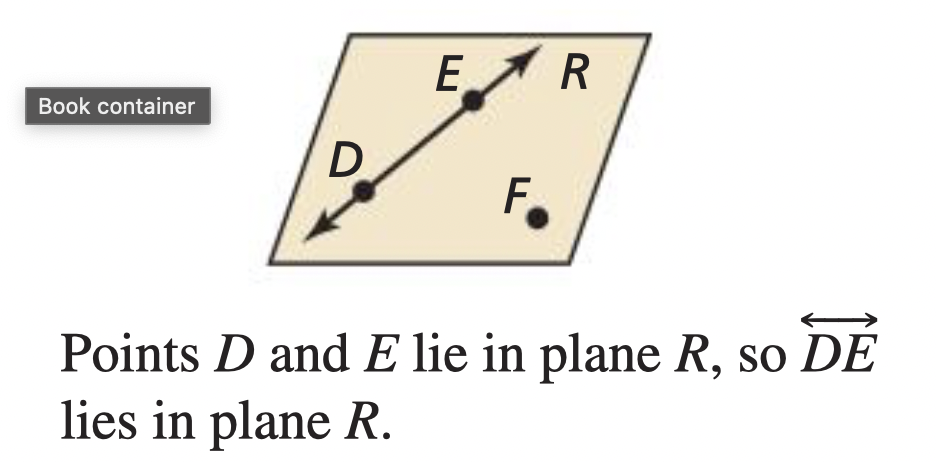
Plane Intersection Postulate
If two planes intersect, then their intersection is a line
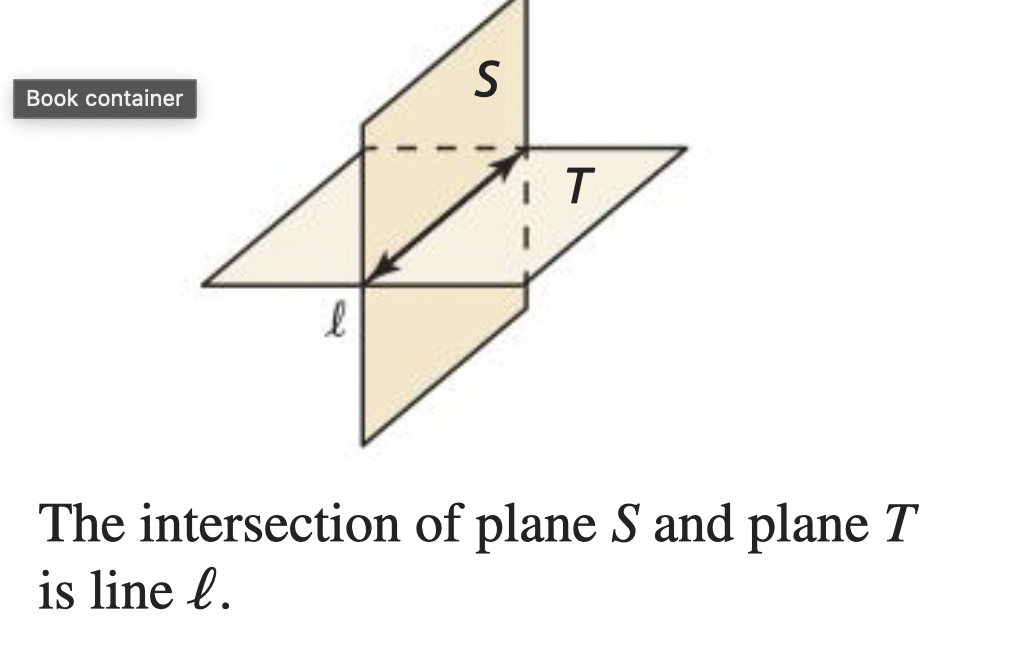
Addition property of equality
If two quantities are equal, then adding the same amount to both keeps them equal.
if blueberries = banana then blueberries + apples = bananas +apples
Subtraction property of equality
If two quantities are equal, then subtracting the same amount from both keeps them equal
If blueberries = bananas, then blueberries – apples = bananas – apples.
Multiplication property of equality
If two quantities are equal, multiplying both by the same nonzero number keeps them equal.
If blueberries = bananas, then blueberries × apples = bananas × apples.
Division property of equality
If two quantities are equal, dividing both by the same nonzero number keeps them equal.
If blueberries = bananas, then blueberries ÷ apples = bananas ÷ apples.
Substitution property of equality
If two quantities are equal, either one can be substituted for the other in any expression.
If blueberries = bananas, then you can replace blueberries with bananas in a fruit salad recipe.
Distributive property of equality
Multiplying a number by a sum or difference is the same as multiplying the number by each part separately and then adding or subtracting.
Apples × (blueberries + bananas) = apples × blueberries + apples × bananas.
Apples × (blueberries – bananas) = apples × blueberries – apples × bananas.
Reflexive property
Anything is always equal to itself.
Blueberries = Blueberries
Bananas = Bananas
Apples = Apples.
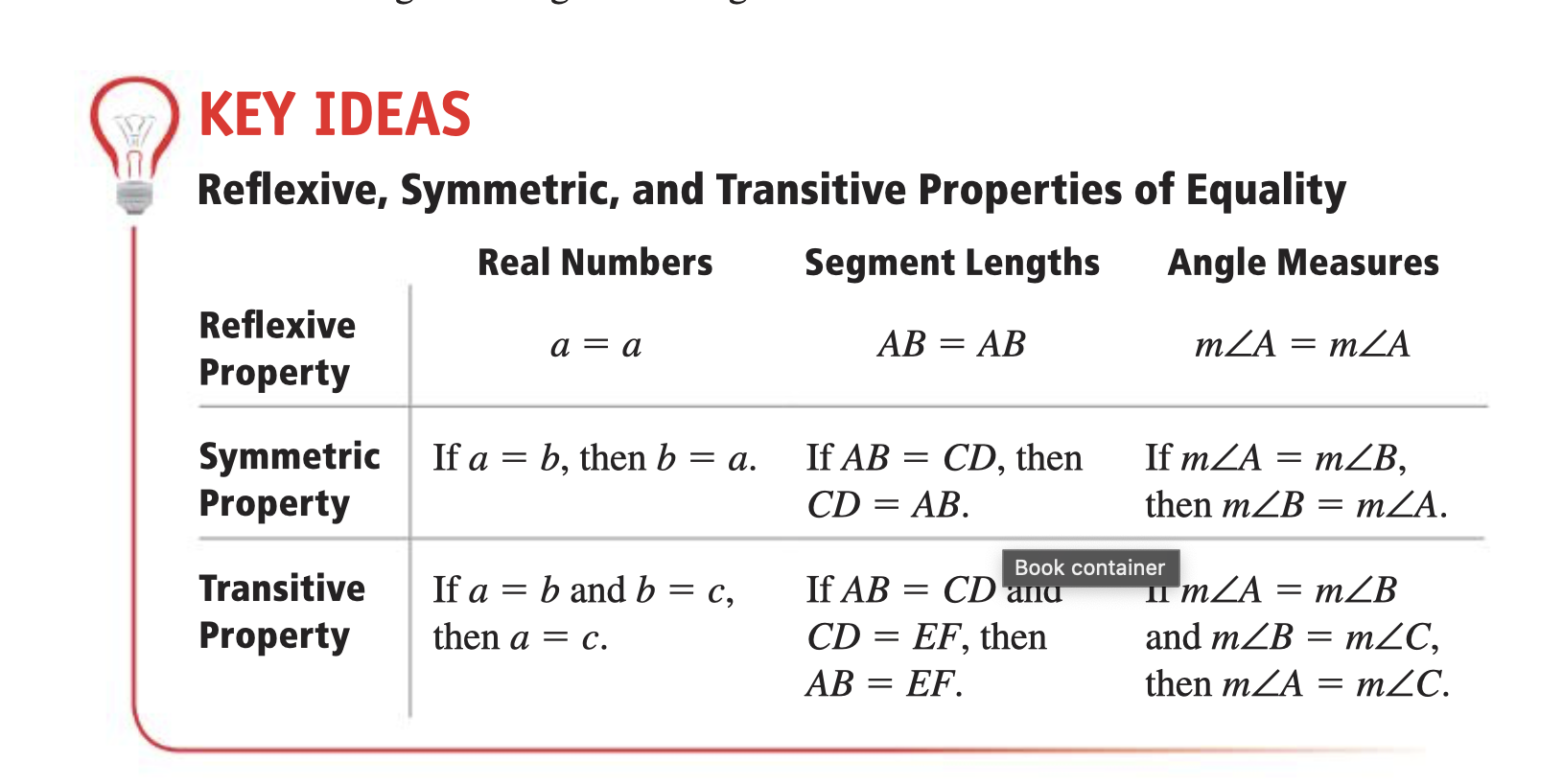
Symmetric property
If one thing is equal to another, then you can flip them and they are still equal.
If Blueberries = Bananas, then Bananas = Blueberries.
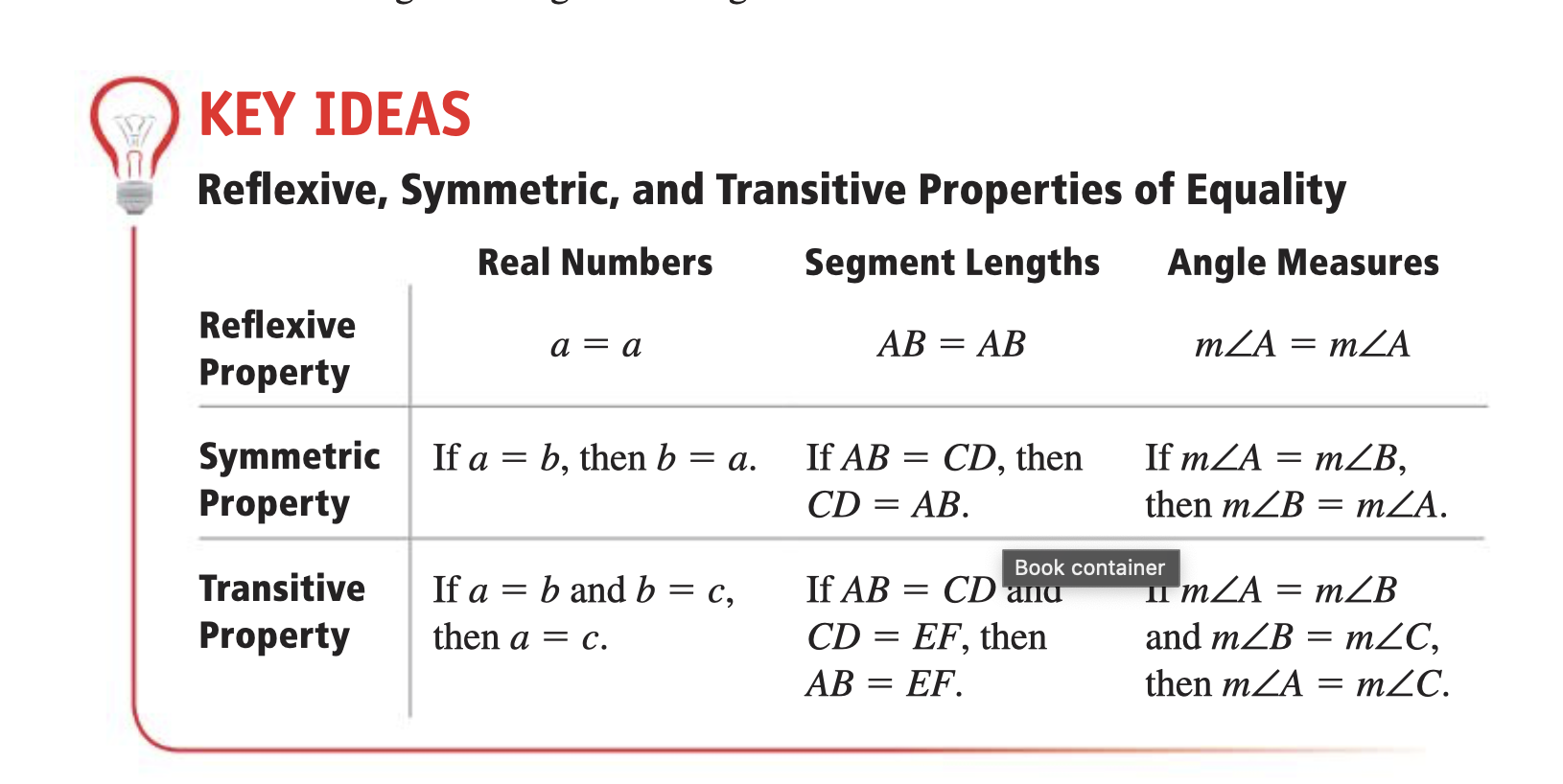
Transitive property
If one thing equals a second, and the second equals a third, then the first equals the third.
If Blueberries = Bananas and Bananas = Apples, then Blueberries = Apples.
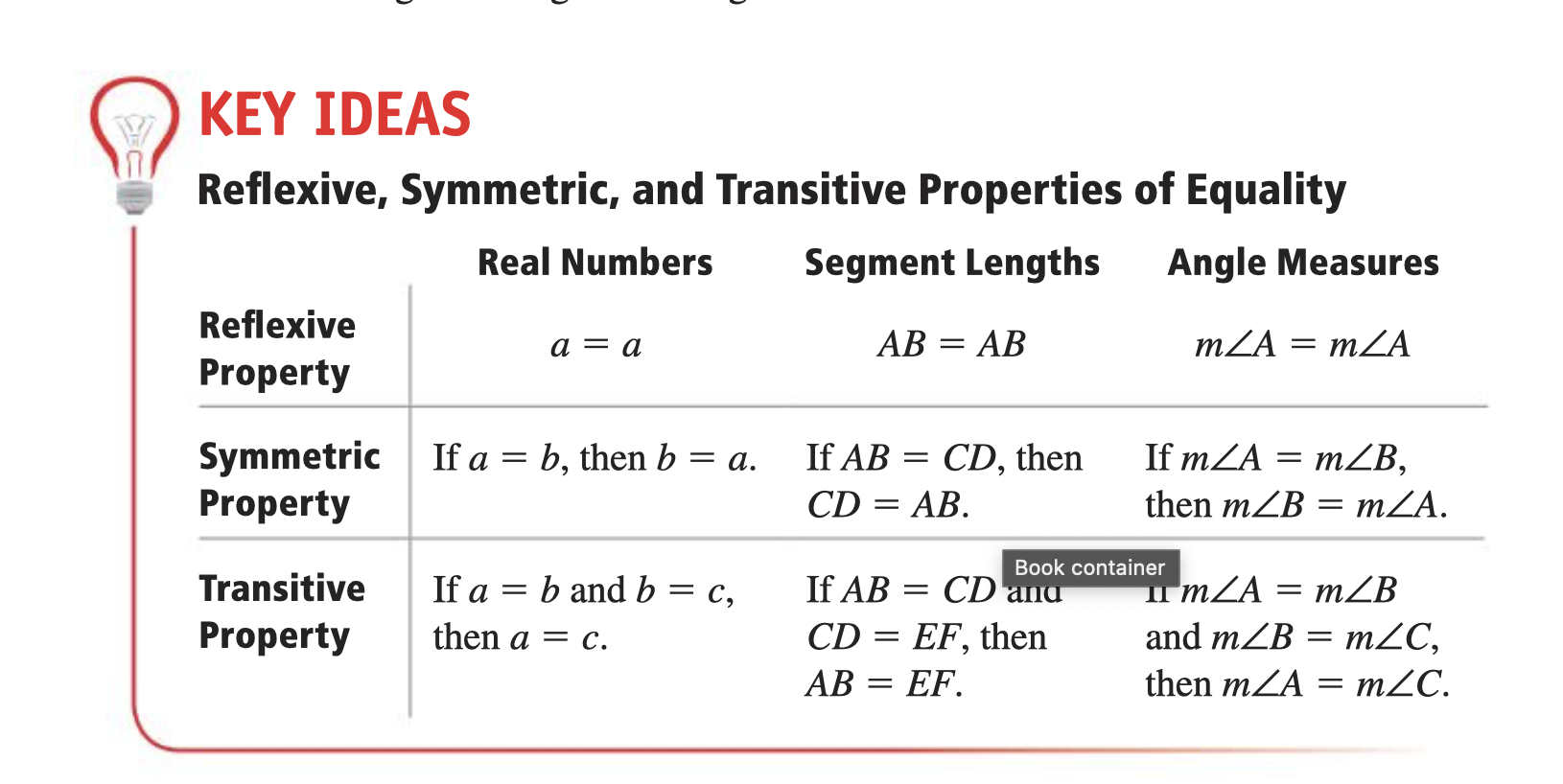
Properties of Segment Congruence
Segment congruence (line lengths being the same) is reflexive, symmetric, and transitive.
A blueberry basket is equal to the same blueberry basket.
If a blueberry basket = a banana basket, then the banana basket = the blueberry basket.
If a blueberry basket = a banana basket and a banana basket = an apple basket, then the blueberry basket = the apple basket.
Properties of Angle Congruence
Angle congruence (angles being the same size) is reflexive, symmetric, and transitive.
A blueberry slice of pie is equal to the same blueberry slice of pie.
If a blueberry angle = a banana angle, then the banana angle = the blueberry angle.
If a blueberry angle = a banana angle and the banana angle = an apple angle, then the blueberry angle = the apple angle.
Right Angles Congruence Theorem
All right angles are congruent
Congruent supplements
If two angles are supplementary to the same angle, then those two angles are congruent.
If <1 and <2 are supplementary and <3 and <2 are supplementary, then <1 ≅ <3
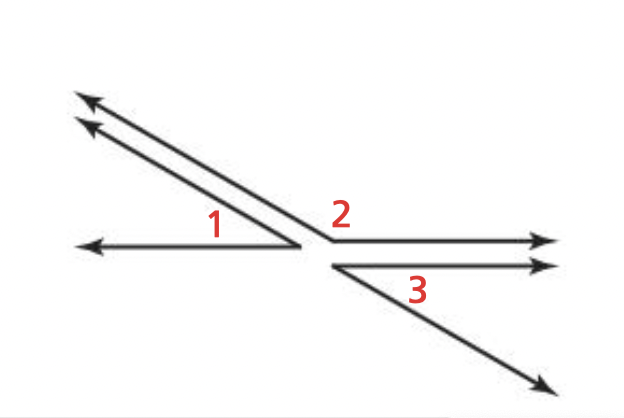
Congruent Complements Theorem
If two angles are complementary to the same angle, then those two angles are congruent.
If <4 and <5 are complementary and <6 and <5 are complementary, then <4 ≅ <6
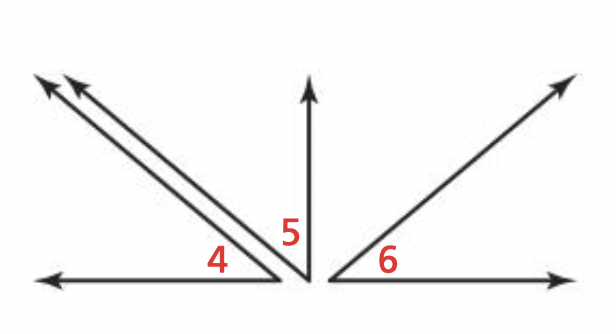
segment addition postulate
If a line of fruit goes from Apple → Banana → Cherry, then the distance from Apple to Banana + the distance from Banana to Cherry = the distance from Apple to Cherry.
Angle addition postulate
If a point is inside an angle, then the two smaller angles add up to the whole angle.
If the banana ray is inside the blueberry angle, then the apple angle + the banana angle = the whole blueberry angle.